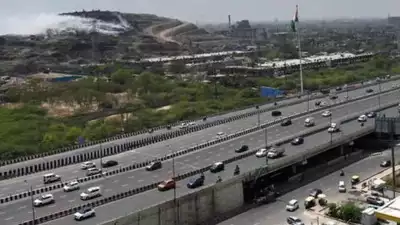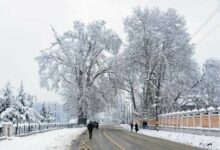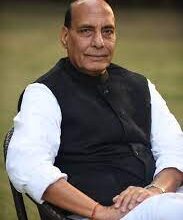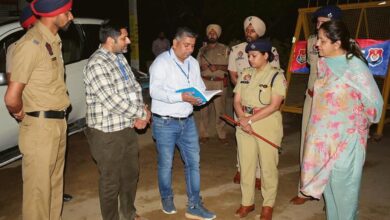First-time stars notwithstanding, there’s still plenty of drama
Ghaziabad is the entry point if the path to Delhi passes via Uttar Pradesh, both politically and otherwise. seen at the nation’s capital from one direction and the biggest and most politically crucial state in India from the other.
This gateway, which was formerly known as the NH-24, has seen significant changes in recent times. It is now the Delhi-Meerut Expressway and, soon, the Delhi-Meerut RRTS (rapid train), placing it at the epicenter of the NCR’s urban march eastward.

Ghaziabad
This is version 2.0 for an industrial city that gained a noticeable urban sheen at the beginning of the 1990s and developed into a real estate and educational hub. This was fueled by the expat community that settled here because of the location and the local jobs that were available, but it lagged behind Gurgaon and Noida, which, with the help of state governments, became more attractive cities for corporations and real estate.
Despite the age of the city, Ghaziabad is still very young politically, having just been delimited and given birth as a parliamentary seat in 2009. However, via association, it became into a heavyweight seat, first held by BJP veteran Rajnath Singh and subsequently by retired general VK Singh. Former Bollywood actor Raj Babbar has been one of the challengers (for Congress).
This is the first election in Ghaziabad without a front-runner from a major party. However, it may also prove to be the most complex yet, roiled by a number of elements such as gridlock in the streets and a community that feels betrayed, as well as the lack of a clear front-runner.
began as a tehsil
Before being given the rank of a district in 1976, Ghaziabad was a tehsil under Meerut politics. It was a part of the Meerut parliamentary constituency in the first general elections. When Ghaziabad joined the Hapur Lok Sabha constituency in 1957, it had 4.2 lakh registered voters. 29 lakh persons are eligible to vote in this election. “I recall seeing political parties use bicycles, bullock carts, and horse carriages for their 1957 campaigns. Sardar Gurmeet Singh, who came from Pakistan as a refugee and stayed in the ancient city, remarked, “It was very different from today.”
Ever since Ghaziabad became an LS seat, the BJP has always performed well in this seat, making it one of the party’s safest seats. With 43% of the total votes cast, Rajnath Singh defeated Congressman Surendra Prakash Goyal by more than 90,000. When the Modi wave swept through the 2014 election, the BJP nominated VK Singh, who narrowly beat Raj Babbar with 5.6 lakh votes. voter share for the BJP surged to 56.5%. With a 61.9% vote percentage, VK Singh won again in 2019.
The BJP has won in 1991, 1998, and 1999, even before 2009, when Ghaziabad was a part of the Hapur constituency. Surendra Prakash Goyal of the Congress narrowly beat Ramesh Chandra Tomar of the BJP, who had won the three previous elections.
Only one woman has been elected to the seat so far, Congresswoman Kamla Choudhary, in 1962, and one independent, Prakash Veer Shastri.
Five distinct portions
Made up of five assembly seats (Sahibabad, Ghaziabad, Loni, Muradnagar, and partially Dhaulana), Sahibabad is crucial to every Lok Sabha election in Ghaziabad. It is one of the biggest assembly seats in the nation, with more than 10 lakh votes. The Bharatiya Janata Party (BJP) became victorious in all five segments during the 2017 and 2022 assembly elections, despite the segments having distinct demographics. Rural areas include Dhaulana (4.2 lakh voters) and Muradnagar (4.6 lakh votes). The majority of voters in these seats are members of the Tyagi, Rajput, Jat, and Brahmin land-owning groups. With 5.2 lakh votes, Loni has a mix of urban and rural areas, with the majority populations being Muslims and Jats. Sahibabad is an urban region with a scattering of contemporary skyscrapers in places like Vaishali, Kaushambi, Vasundhara, and Indirapuram. Adjacent to it is Khoda, one of the biggest unofficial settlements in the nation, which serves as a haven for many migrant laborers in need of cheap housing from other regions. With 4.67 lakh votes, the old city portion of Ghaziabad is mostly urban, home to a sizable trade class, and primarily composed of Khatri Punjabi, OBC, and SC voters. In the Lok Sabha segment, Brahmins make up the biggest group, closely followed by Rajputs.
Rumblings from the Rajputs
A large portion of the Rajput population resides in Dhaulana, which is a component of “Satha-Chaurasi.” The Sisodiya and Tomar clans, two Rajput groups with Mewar as their ancestry, occupy 60 and 84 villages in the area, respectively, giving rise to the term “Satha-Chaurasi.” Another significant demographic in this sector is the Muslim community, which, combined with the Rajputs, receives over 70% of the vote. The focus of this season’s campaigning has been Dhaulana, since the Rajputs have publicly expressed their dissatisfaction with the BJP. The opposition feels that they have managed to breach an unbreakable BJP citadel this time.
This has been happening in Ghaziabad ever since BJP candidate and two-term MLA Atul Garg was declared. Rajnath Singh and VK Singh are both Rajputs. The community questioned why this Rajput was not given a ticket. Under the auspices of the Kisan-Mazdoor Sangathan in Dhaulana, the community convened a panchayat on April 17. The Kisan-Mazdoor Sangathan’s national spokesman, Lalit Rana, said, “The Rajput community has decided that they will not vote for the BJP because they are against the party.”
Who will they vote for, though? Brahm Singh, another Sangathan member, acknowledged that there was still no consensus on that. “The community is split quite evenly over who to support. In Nand Kishor Pundir, Mayawati has put up a Rajput candidate; nonetheless, the community does not identify as BSP. NOTA is an additional option,” Singh said.
According to Garg, the BJP was the target of a disinformation campaign. “Unlike the opposition’s disinformation effort, the Dhaulana section is supporting us well. This is untrue in any sense. A few members of the Rajput community were not thrilled, but they have returned to us. Because of their innate nationalism, the Rajput community sees the BJP as a party of their own, “added the speaker.
It goes beyond identity.
But caste and identity are only two aspects of it all. Traffic congestion is a significant issue in both Ghaziabad’s urban and rural districts. Despite having over 10 lakh registered cars, the city’s traffic control system has not yet been adequately shaped by the new police commissionerate. There is often traffic congestion at the NH-9, the Meerut tri-section, Hapur Chungi, and Mohan Nagar. Four years after it was put into service, the integrated traffic management system is still being deployed.
Despite being a persistent issue that concerns all people, no one has brought up the subject of air pollution. Major sources include open rubbish burning, biomass burning, and pollution from vehicles and industries. Located in the same airshed as Delhi, Ghaziabad is one of the most polluted cities in the world and has more than one severe day per winter.
The city also has trouble disposing of its trash, as rubbish piles that rot along the sides of the roadways attest. In order to establish a waste-to-energy plant in Galand, the state government signed an agreement in 2018 with GC International, a firm located in the Netherlands. Although the plant was supposed to sprout within 18 months, local resistance has prevented it from getting off the ground.






